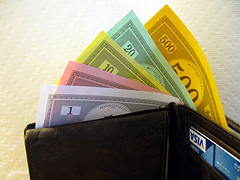Chase Tries To Pass Fake Money Back To Customer
A guy withdrew some hundreds from his credit union to pay his roommate his portion of the rent. The roommate deposited them at Chase, which later discovered that one of the hundreds was actually a $5 altered to look like a $100.
Normally the rule with counterfeit money is that whoever gets stuck with it last is the one who gets screwed, but Chase later deducted $100 from the roommate’s bank account. When he complained, they tried to play it off like they hadn’t put the bill in the drawer, so it wasn’t fully processed, so it wasn’t their responsibility. After consumer reporter David Lazarus started asking questions, they ended up crediting the roommate back the money.
It sounds counterintuitive, why should the bank have to eat the charge if someone deposits fake money?
Because by effectively passing the phony buck back to the customer, Chase was essentially conducting a transaction with the fake bill. After they took possession of the bill and he left the bank, it was on them.
LAT writes, “Counterfeit money is like a hot potato. Whoever ends up with it last is the victim.”
Bank tries to pass the (fake) buck back to customer [LAT] (Thanks to Robert!)
Want more consumer news? Visit our parent organization, Consumer Reports, for the latest on scams, recalls, and other consumer issues.


